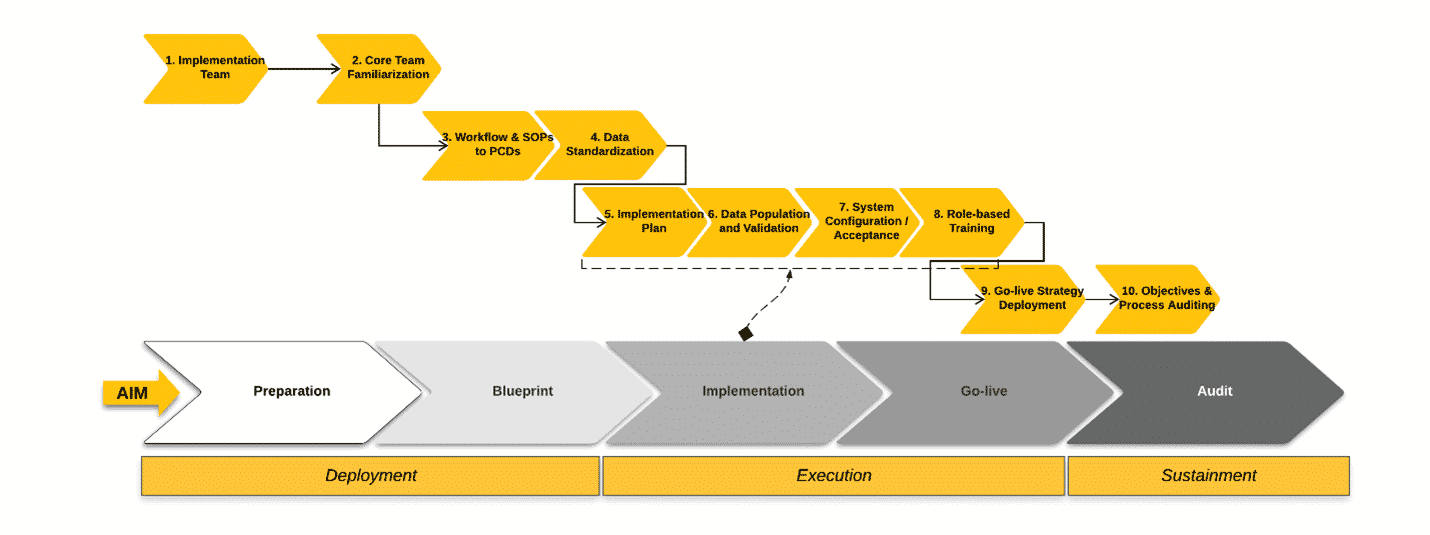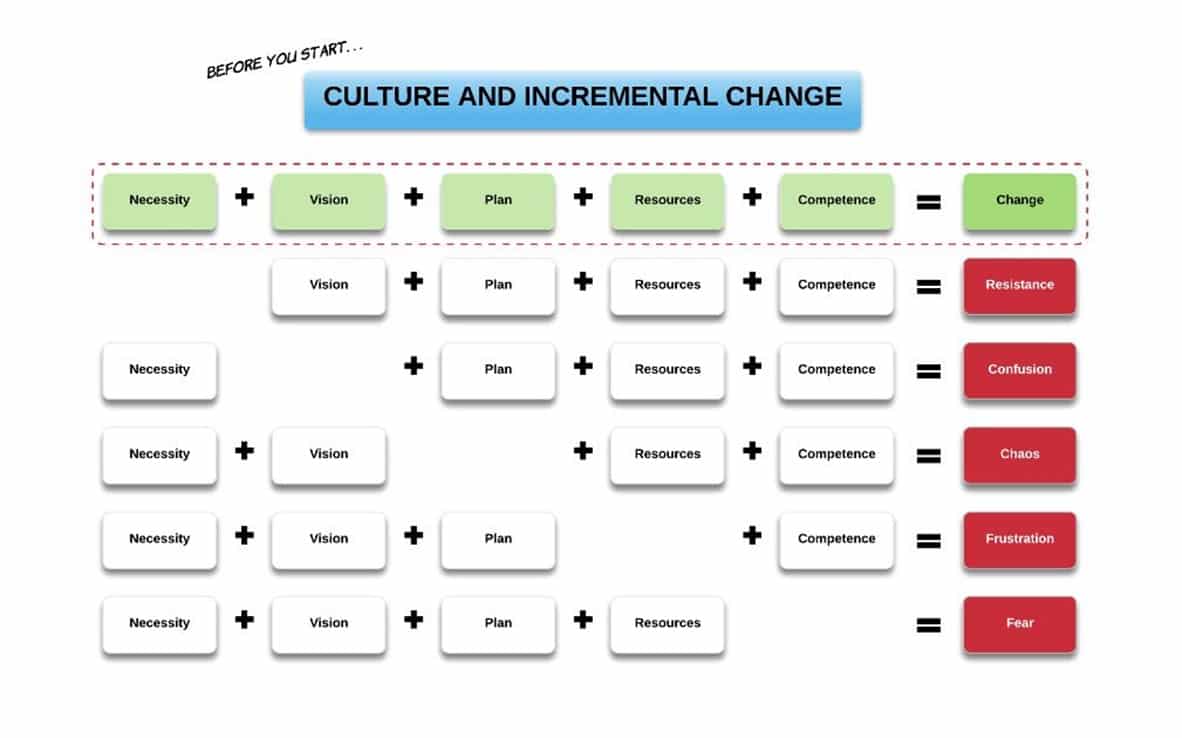Research from The Standish Group shows that more than 31% of IT software implementation projects are canceled before they’re completed. As researchers study why some projects fail to launch while others succeed, a few commonalities have emerged.
In successful implementations, the team responsible not only starts its planning well ahead of the kickoff, but also team members don’t move forward until they have firmly established the strategic direction, the justification for the project, and the motivational drive. That positions them to win the executive-level sponsorship necessary to secure the required resources for the project’s duration.
In his October 2020 webinar, “AIM first: Aligning your organization for a successful CMMS implementation,” Scott Rojas calls this pre-planning the “mission before the mission,” or, in short form, AIM (Align, Integrate, Monitor/Measure).
Rojas, a senior consultant and computerized maintenance management system (CMMS) deployment expert for Fluke Reliability, specializes in operational excellence, business process analysis, and quality management. His project portfolio management (PPM) approach to CMMS software implementation has helped clarify the need for an “AIM first” methodology.
For a successful implementation, says Rojas, three visions need to be aligned: the executive mission, the PPM process, and the plan and execution of the CMMS implementation.
“What is true for the strategy-driven organization must also be true for the CMMS project!” he emphasizes.
AIM first: Focus on strategy and mission
The AIM viewpoint is that clarity on strategy and mission must come before all else. Align first, then integrate, and then monitor.
A good place to start the alignment process is confirming the team’s rationale or the new CMMS software’s purpose. When Rojas polled the webinar audience, most responded that a CMMS should be best used as part of a strategic program or multiple programs (42%) and/or as a maintenance and reliability database (40%).
Rojas concurs with that expectation but cautioned about implementing a CMMS as a standalone strategic program. He says that plant vision and mission should define the strategy, and the CMMS software should support the vision and mission.
The CMMS initiative strategy, he says, should be:
- Strategically focused
- Objective driven
- Resource conscious
- Technically feasible
- Economically viable
- With drivers justified
Validating those six points satisfies the AIM-first requirement and positions the core team to begin preparations. Note where AIM is located in Figure 1: At the very beginning. The AIM process starts before the implementation plan and carries through the entire initiative.
As Figure 1 illustrates, a healthy CMMS implementation plan requires preparation, creating a blueprint and an implementation plan, carefully shepherding data transfer, system confirmation, and training to go-live and beyond to sustainment activities.

Figure 1. The 10 keys to CMMS implementation success
By spending the extra time aligning on mission and vision before beginning the implementation process, Rojas says that the team not only attracts buy-in but has a much better chance of sustaining that buy-in throughout the implementation process.
Common failure points in CMMS implementations
Rojas identifies four levels of pitfalls encountered during CMMS implementations and the 50 frequent culprits of CMMS implementation failures. For the complete list, reference his webinar presentation. Here are some examples of the pitfalls:
Level 1
- The organization is not committed to the CMMS implementation or lacks the culture to change
- Incomplete discovery of drivers and strategic benefits
Level 2
- Lack of top management understanding and support
- Insufficient budget or resources
Level 3
- Poor project planning
- No project performance measures
Level 4
- A flawed CMMS selection process
- No implementation process or project life-cycle methodology
Have you ever heard the advice that, when planning the timeframe for a job, you must do your best assessment and then double it?
Rojas is inclined to agree about the expected timeframe between the CMMS project charter sponsorship and go live data: You may need to double it. While 47% of the webinar audience wanted 6-12 months for implementation (according to a poll question), Rojas cautions that even that may not be enough time if all the pieces aren’t in place initially.
All five “green” elements in Figure 2 need to be present for a CMMS implementation to deliver its expected value. If any are missing at the start, expect the project to take longer than desired or to be unsuccessful. Trace to the right to see how the plant culture responds to missing elements.

Figure 2. Charting the five conditions required at the initiative level for successful project implementation
Without a diligent AIM-first methodology, those gaps in Figure 2 are likely to occur, leading to a “dominating sense of organizational frustration and attrition,” in addition to other damaging effects, Rojas says.
Here are signs that a CMMS project is in trouble:
- Significant “scope-creep” without change control
- Escalating costs accompanied by a deterioration in value and benefits
- Schedule slippages that cannot be corrected
- Missed deadlines
- Low morale, accompanied by changes in key project personnel
What “good AIM” looks like
To avoid all of this, you must re-align the project’s strategic value and the business case.
Here are some examples of applying AIM principles and starting correctly:
- The Corporate Director of Maintenance is ready to deploy an enterprise-wide CMMS.
- He forms a Business Case Development (BCD) team to get the ball rolling.
- The team conducts the appropriate due diligence and works to prepare a solid business case, including a cost-benefit analysis with all the portfolio selection criteria hitting the mark with the best case, average case, worst case, and do-nothing scenarios.
- The business analyst on the team submits the business case for executive committee approval.
- Having been approved, the project initiates, and a project manager is assigned to begin working, starting with thorough research and review of the high-level scope and work area subject to implementation.
- With the help of crucial SMEs, the PM works diligently on the Project Charter. The PM provides updates and some additional required scope items to the business case and augments with other resource requirements.
- The PM submits the Project Charter and strategic alignment updates, and the ROI still looks promising, thanks to the excellent upfront work of the BCD team.
- The core project team enters the planning phase and begins to work with a business analyst, as requested in the Project Charter to develop the full scope of business requirements.
Rojas suggests involving a business analyst in the project from the beginning and leaning heavily on their input.
He also advises thoroughness when specifying other resources – can the in-house team do it all, or will external help be needed?
And, he says, always conduct a thorough cost-benefit analysis, do your due diligence and develop a “rock-solid” business case at the preliminary stage.
Related articles:
